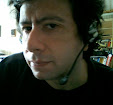The assertion that the romance languages are just a modern version of Latin may sound exaggerated, but it is nonetheless one that is shared by most scholars today. Among them Italian comes even closer: most Latin words, even when spoken are intelligible by Italian speakers. The Florentine dialect, on which Italian is largely based, "has preserved with good accuracy the morphological and phonetic traits [and] (...) such closeness to Latin has historical roots: the fact that Tuscan emerged relatively late and the pre-humanistic environment in which it flourished" (Segre 1978).
A few facts that may account for its archaic traits:
1. most linguistic traits of Latin are also shared by the Tuscan dialect: the domination by Etrurian Kings and the political influence of their families in Rome’s earlier times. The Etrurian substratum is a feature of both Latium and Tuscany's dialects.
2. Italian scholars and writers long held the Italian language to be inferior to Latin and drew heavily on Latin sources to coin words. Only in the 13th century did middle-class Florence impose Tuscan as the language for commerce and banking. The intellectual elites, the clergy and the nobility insisted on using Latin, and the Renaissance studies largely encouraged it.
3. As a result of this attitude and a lack of political unity the Italian language developed a few centuries later than most romance languages: though the Indovinello Veronese (9th c. A.D.), a riddle found in Verona shows traces of Italian, scholars still place it in that gray area of (late) vulgar Latin.
The earliest documents in the Italian language date back to about 960 A.D. and come from a deed signed by a Capuan notary at Montecassino. The fact that a notary must use Italian to be understood by his audience is proof that the Italian language, though its standard, is widely spoken. Its development is linked closely to the history of Italy and the Renaissance - then a national standard was created - and the consciousness of Italy's national identilty set Italians on the long road to political unification.
In the following days we're going to explore the birth and development of Italian from vulgar latin to today's standard and touch a bit on Italian dialects and foreign language minorities that account for its rich cultural heritage.





No comments:
Post a Comment